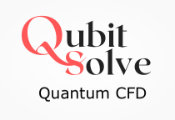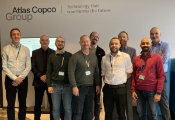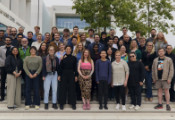Vanishing Atoms Can Ruin Quantum Calculations. Scientists Have a New Plan to Locate Leaks.
ALBUQUERQUE, N.M., December 18, 2024 -- Quiet quitting isn’t just for burned out employees. Atoms carrying information inside quantum computers, known as qubits, sometimes vanish silently from their posts. This problematic phenomenon, called atom loss, corrupts data and spoils calculations.
But Sandia National Laboratories and the University of New Mexico have for the first time demonstrated a practical way to detect these “leakage errors” for neutral atom platforms. This achievement removes a major roadblock for one branch of quantum computing, bringing scientists closer to realizing the technology’s full potential. Many experts believe quantum computers will help reveal truths about the universe that are impossible to glean with current technology.
“We can now detect the loss of an atom without disturbing its quantum state,” said Yuan-Yu Jau, Sandia atomic physicist and principal investigator of the experiment team.
In a paper recently published in the journal PRX Quantum, the team reports its circuit-based method achieved 93.4% accuracy. The detection method enables researchers to flag and correct errors.
The research was supported by Sandia’s Laboratory Directed Research and Development program.
Detection heads off a looming crisis
Atoms are squirrely little things. Scientists control them in some quantum computers by freezing them at just above absolute zero, about -460 degrees Fahrenheit. A thousandth of a degree too warm and they spring free. Even at the right temperature, they can escape through random chance.
If an atom slips away in the middle of a calculation, “The result can be completely useless. It’s like garbage,” Jau said.
A detection scheme can tell researchers whether they can trust the result and could lead to a way of correcting errors by filling in detected gaps.
Matthew Chow, who led the research, said atom loss is a manageable nuisance in small-scale machines because they have relatively few qubits, so the odds of losing one at any given moment are generally small.
But the future has been looking bleak. Useful quantum computers will need millions of qubits. With so many, the odds of losing them mid-program spikes. Atoms would be silently walking off the jobsite en masse, leaving scientists with the futile task of trying to use a computer that is literally vanishing before their eyes.
“This is super important because if we don’t have a solution for this, I don’t think there’s a way to keep moving forward,” Jau said.
Researchers have found ways to detect atom loss and other kinds of leakage errors in different quantum computing platforms, like those using electrically charged atoms, called trapped ion qubits, instead of neutral ones. The New Mexico-based team is the first to non-destructively detect atom loss in neutral atom systems. By implementing simple circuit-based techniques to detect leakage errors, the team is helping avert the crisis of uncontrollable future leakage.
Just don’t look
The dilemma of detecting atom loss is that scientists cannot look at the atoms they need to preserve during computation.
“Quantum calculations are extremely fragile,” Jau said.
The operation falls apart if researchers do anything at all to observe the state of a qubit while it’s working.
Austrian physicist Erwin Schrödinger famously compared this concept to having a cat inside a box with something that will randomly kill it. According to quantum physics, Schrödinger explained, the cat can be thought of as simultaneously dead and alive until you open the box.
“It’s very easy to have a mathematical description of everything in terms of quantum computing. But to visualize entangled quantum information, it’s hard,” Jau said.
So how do you check that an atom is in the processor without observing it?
“The idea is analogous to having Schrödinger’s cat in a box, and putting that box on a scale, where the weight of the box tells you whether or not there’s a cat, but it doesn’t tell you whether the cat’s dead or alive,” Chow said.
Surprise finding fuels breakthrough
Chow, a University of New Mexico Ph.D. student and Sandia Labs intern at the time of the research, said he never expected this breakthrough.
“This was certainly not a paper that we had planned to write,” he said.
He was debugging a small bit of quantum computing code at Sandia for his dissertation. The code diagnoses the entangling interaction — a unique quantum process that links the states of atoms — by repeatedly applying an operation and comparing the results when two atoms interact versus when only one atom is present. When the atoms interact, the repeated application of the operation makes them switch between entangled and disentangled states. In this comparison, he observed a key pattern.
Every other run, when the atoms were disentangled, the outcome for the two-atom case was markedly different from the solo-atom case.
Without trying, Chow realized, he had found a subtle signal to indicate a neighboring atom was present in a quantum computer without observing it directly. The oscillating measurement was the scale to measure whether the cat is still in the box.
“This was the thing that got me really excited — that made me show it to Vikas.”
Vikas Buchemmavari, another Ph.D. student at UNM and a frequent collaborator, knew more quantum theory than Chow. He works in a research group led by the director of UNM’s Center for Quantum Information and Control, Ivan Deutsch.
“I was simultaneously very impressed by the gate quality and very excited about what the idea meant: we could detect if the atom was there or not without damaging the information in it,” Buchemmavari said.
Sandia Labs verifies technique
He went to work formalizing the idea into a set of code tailored to detect atom loss. It would use a second atom, not involved in any calculation, to indirectly detect whether an atom of interest is missing.
“Quantum systems are very error-prone. To build useful quantum computers, we need quantum error correction techniques that correct the errors and make the calculations reliable. Atom loss— and leakage errors — are some of the worst kinds of errors to deal with,” he said.
The two then developed ways to test their idea.
“You need to test not only your ability to detect an atom, but to detect an atom that starts in many different states,” Chow said. “And then the second part is to check that it doesn’t disturb that state of the first atom.”
Chow’s Sandia team jumped onboard, too, helping test the new routine and verify its results by comparing them to a method of directly observing the atoms.
“We had the capability at Sandia to verify it was working because we have this measurement where we can say the atom is in the one state or the zero state or it’s gone. A lot of people don’t have that third option,” Sandia’s Bethany Little said.
A guide for correcting atom loss
Looking ahead, Buchemmavari said, “We hope this work serves as a guide for other groups implementing these techniques to overcome these errors in their systems. We also hope this spurs deeper research into the advantages and trade-offs of these techniques in real systems.”
Chow, who has since earned his doctoral degree, said he is proud of the discovery because it shows the problem of atom loss is solvable, even if future quantum computers do not use his exact method.
“If you’re careful to keep your eyes open, you might spot something really useful.”




































